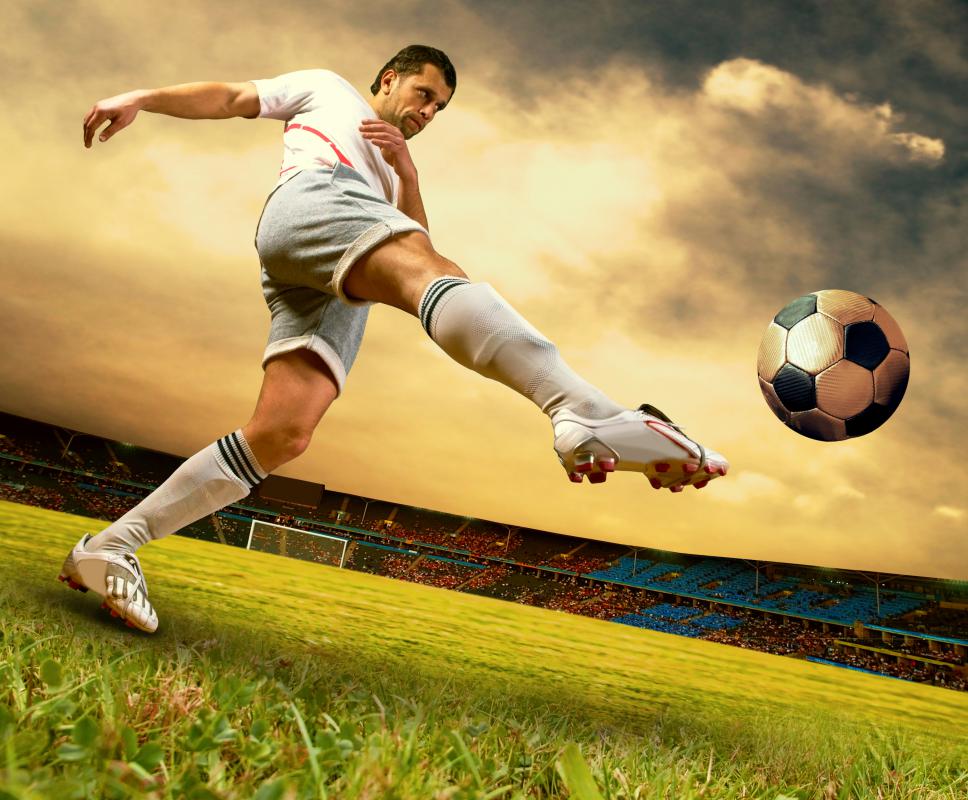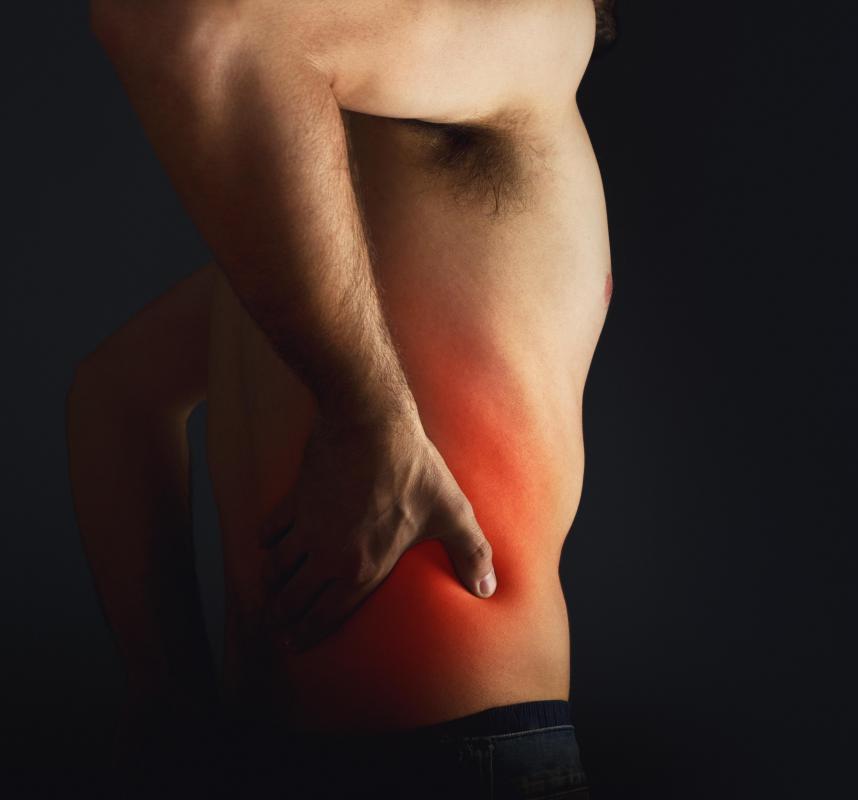At TheHealthBoard, we're committed to delivering accurate, trustworthy information. Our expert-authored content is rigorously fact-checked and sourced from credible authorities. Discover how we uphold the highest standards in providing you with reliable knowledge.
What is an Ischial Tuberosity?
When a person is in a seated position, his or her weight typically rests on a section of bone called the ischial tuberosity. There are two of these bony swellings, sometimes called the sitting bones, located at the front of the superior ramus of the ischium, which is the lower back portion of the hip bone. The gluteus maximus muscle lies over it when a person is standing; however, when he or she sits down, the muscle shifts to a position behind it and the tuberosity bears the majority of the weight.
This bone is an attachment point for several muscles and ligaments. Three of the hamstring muscles — the semimembranosus, the biceps femoris, and the semitendinosus — start there. The adductor magnus, a large muscle in the thigh that lies next to the hamstrings, also originates at the tuberosity. The sacrotuberous ligament connects it to the sacrum.

Due to the number of leg muscles attached to the ischial tuberosity, sports-related injuries are fairly common in this area. Sports such as running, soccer, and cycling, where a high level of strain is put on the thighs, are often the culprit. Muscles can be pulled or damaged from overuse, and tendinitis can also develop. In extreme cases, fractures of the bone or even the detachment of muscles may occur, though this is relatively rare.

Extended periods of sitting on hard surfaces may also lead to damage in the area. One of the most common outcomes is a condition called ischial bursitis. A fluid-filled sac called the bursa lies over the tuberosity, acting as a cushion between the pelvis and nearby tendons to keep them from being damaged. Prolonged sitting may lead to inflammation of the bursa. Symptoms may include pain and tenderness in the hips and buttocks, and possibly sciatica, where pain and numbness can spread down into the leg.

Treatment for ischial tuberosity injuries typically involves rest to allow the area to heal and medication to manage pain. Ice applied to the area may help reduce swelling and inflammation, as well as the use of NSAIDs. In some cases, physical therapy to stretch and strengthen the muscles may be useful. Those with bursitis are often instructed to sit on a padded surface, such as a doughnut cushion. In cases where damage is severe, corticosteroid injections may be necessary, or as a last resource, surgery may need to be performed.
AS FEATURED ON:
AS FEATURED ON:















Discussion Comments
@Catapult, you bring up a good point. The pharmaceutical companies, and the media in general, have done their best to convince us that aches and pains are either just a part of aging, which can be fixed with the right "Noninvasive" procedures or super foods, or that it can be a sign of something horrible that needs miracle drugs or crazy diets. Some things do get painful as you age, but if you take care of yourself it should not ever be a lot at one time- that is when you know you need to see a doctor, and not just for some sort of quick fix medicine.
If you have any sort of problem with constant or even occasional but extreme pain in your hip, it is important to go to the doctor. Many people, my father included, spent many years shrugging off pain in their hips or backs or other joints, only to need either constant treatment in the form of chiropractic care or physical therapy, or even worse, complicated surgery. There is plenty of treatment for hip pain out there, but it often needs to be caught early to have a real impact.
One of the worst parts of something like bursitis is that once you have it, it is all but impossible to get over entirely, similarly to osteoperosis; our bones are not nearly so strong as many of us like to believe, and once you damage them, there sometimes is not coming back from that.
Post your comments